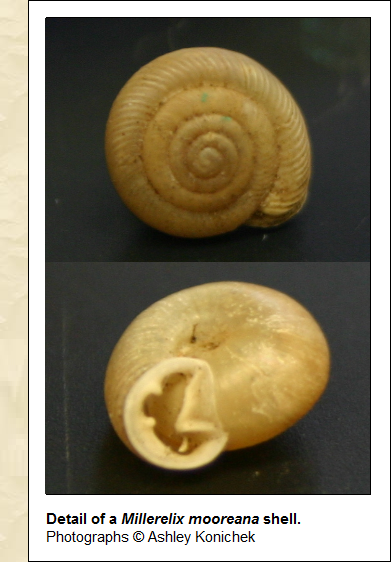Description
Classification
Habitat
Diet
Reproduction
Gallery
References
Contact

Description
Some of the most complete descriptive information on Millerelix fatigiata can be found in either Pilsbry's Land mollusca of North America (north of Mexico) under the species name Polygyra fatigiata or in Bland and Cooper's Papers on North American Helicidæ, and on the Geographical Distribution of West India Land Shells under the species name Helix fatigiata. Although originally classified by Say as Polygyra fatigiata, this species was reclassified as Helix fatigiata in 1840 (Bland, Cooper 1862) and later as Millerelix fatigiata in 1994 (Emberton 1994).
Information on the shell characteristics of Millerelix fatigiata on this page, unless noted otherwise, comes from Land mollusca of North America (north of Mexico), written by Pilsbry in 1948.
Shell description
Height: 3.6 mm
Diameter: 9.5 to 10.4 mm
Number of Whorls: 6
Similar species: Millerelix trootsiana
The base of the shell is convex; the upper surface is almost flat. The spire is also almost flat and the shell has a notably carinate periphery, meaning the shell has an angular (rather than round) contour (Dourson 2006). The embryonic whorl is almost completely smooth, but striation gradually increases as the whorls progress and is strongly visible in the last whorl. The base, however, is only softly striated.
The color of the shell is described as “dilute cinnamon-buff,” with the base of the shell being lighter in color. There are also a small number of papillae (small bumps on the outer surface of the shell, (Dourson 2006)) noticeable on the base of the shell.
The opening of the shell (called the aperature, (Dourson 2006)) has two teeth; the palatal tooth (on the outer lip of the aperature (Dourson 2006)) is rounded and twice as wide as the basal tooth (located on the lower lip, (Dourson 2006)). Millerelix fatigiata is closely related to M. trootsiana in terms of the tubercle on the columellar axis, the structure of the shell opening, the shape of the shell's upper surface (Pilsbry 1948).